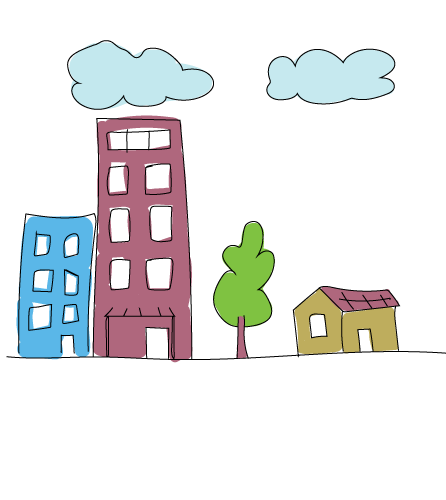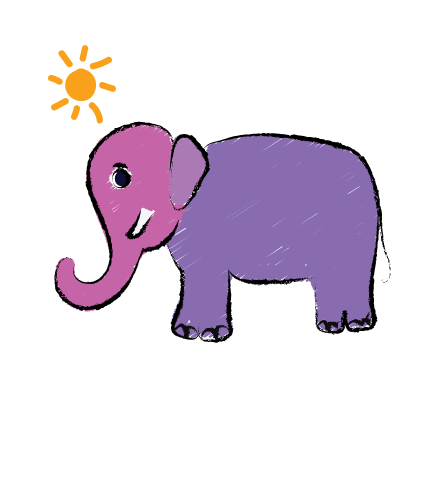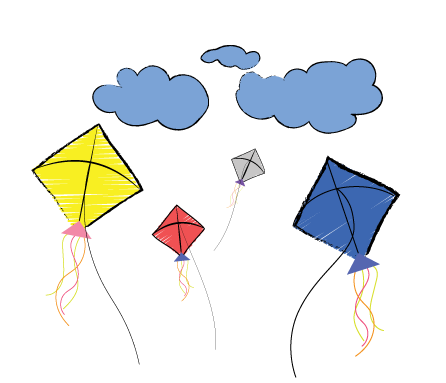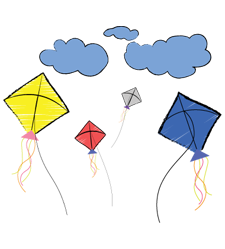

Our curriculum is about creating magic-like events. Using the five basic components of Social and Emotional Learning (SEL), we hope to establish a recipe for success by bridging hearts and brains.
We wholeheartedly honour eccentricities, support uniqueness, and sprinkle kindness like confetti. Together, we are believe in creating a safer and braver space where every child feels like they belong and every day is an adventure just waiting to happen.

In environments affected by trauma, nonverbal communication transcends language barriers, making it accessible to children who struggle to articulate their experiences verbally. The four fundamental functions of expressive arts therapy are self-regulation, co-regulation,
exploration and restoration (Malchiodi, 2022). Through expressive arts, nonverbal modalities offer avenues for processing trauma and building resilience which allows children to access deeper emotions, release tension and reclaim a sense of agency in their narratives.
Under direction by the CDC and Kaiser Permanente, the Adverse Childhood Experiences (ACEs) project looked at how different negative childhood events—including abuse, neglect, family dysfunction, and parental separation—might impact health later in life. The “dose-response” relationship—that is, the chance of mental health conditions (e.g., depression, anxiety), substance misuse, chronic illnesses (e.g., heart disease, diabetes) increases with more ACEs a person experiences.
Crucially, scientists have also found how supportive connections, social resources, trauma-informed treatment can help to offset even if ACEs can present major hazards. To promote greater long-term health and well-being, ACEs must thus be identified and addressed in both community and healthcare environments.
In trauma-affected settings, nonverbal communication goes beyond linguistic constraints and becomes available to youngsters who find it difficult to express their feelings. The four fundamental functions of expressive arts therapy are self-regulation, co-regulation, exploration and restoration (Malchiodi, 2022). By means of expressive arts, nonverbal modalities provide means for trauma processing and resilience building, therefore enabling children to access deeper emotions, relieve tension, and recover agency in their narratives.


By means of age-appropriate activities and boundary-based talks on body-based decisions and permission, we establish safe environments where children may explore their identities, grasp acceptable relationships, and acquire the skills to effectively express their needs and limits.
We think that CSE is a great tool for encouraging post-traumatic growth and resilience, so enabling children to recover agency over their bodies and life and so empower them to flourish in a complicated and always changing environment.



Kyokan Foundation is a nonprofit NGO focusing on Trauma Work and
Social Justice through trauma informed expressive arts, Socio Emotional
Learning (SEL) in education and comprehensive sexuality education
(CSE). Registered under Section 8 of the Indian Companies Act,
donations are tax-exempt under Section 80G.
A/C Name: KYOKAN FOUNDATION
A/C number: 922020011470448
IFSC: UTIB0002780
Swift Code: AXISINBB005
Name and Branch: Axis Bank Ltd, Park Street Branch
Kyokan Foundation is a nonprofit NGO focusing on Trauma Work and
Social Justice through trauma informed expressive arts, Socio Emotional
Learning (SEL) in education and comprehensive sexuality education
(CSE). Registered under Section 8 of the Indian Companies Act,
donations are tax-exempt under Section 80G.